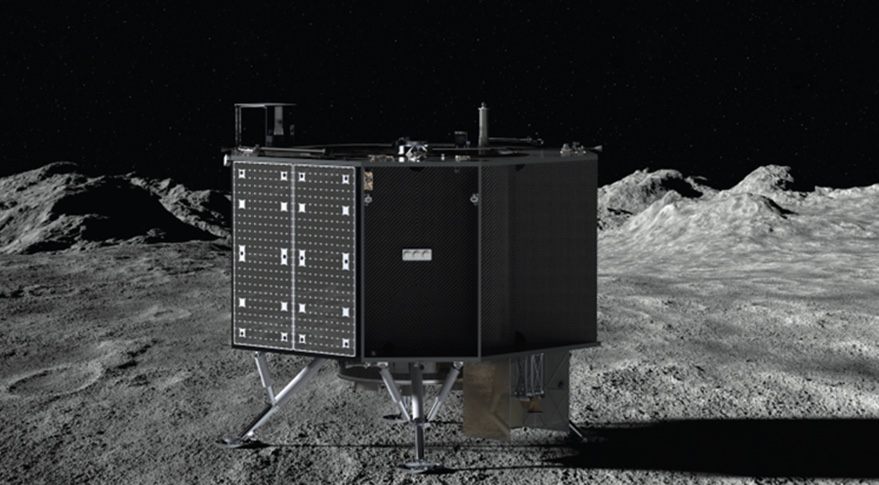WASHINGTON — NASA awarded a contract to Draper to send three science instruments to the far side of the moon through a commercial payload delivery program.
NASA announced July 21 it selected a team led by Draper for the 2025 mission to land in Schrödinger Basin, an impact basin about 320 kilometers across on the lunar farside near the south pole. The task order, awarded through the agency’s Commercial Lunar Payload Services (CLPS) program, is worth $73 million.
The lander, called SERIES-2 by Draper, will deliver to Schrödinger Basin three experiments to collect seismic data, measure the heat flow and electrical conductivity of the lunar subsurface and measure electromagnetic phenomena created by the interaction of the solar wind and plasma with the lunar surface.
The mission is the eighth NASA has awarded to date as part of CLPS, but the first to go to the lunar farside. The only mission by any country to land on the far side of the moon is China’s Chang’e-4 mission, which successfully landed in Von Kármán Crater in January 2019 and deployed the Yutu 2 rover that remains operational today.
“The payload delivery location is a first for us. Operations from the far side of the moon will help improve how we track activities from this location to address scientific goals, all while we gather data from the payloads,” Chris Culbert, NASA CLPS program manager at the Johnson Space Center, said in a statement.
Because the lunar farside is out of view of the Earth, the lander will need relay spacecraft to maintain communications. Draper said in its announcement of the contract that Blue Canyon Technologies will build two satellites that the mission will deploy before landing. Advanced Space, which operates the CAPSTONE lunar cubesat mission for NASA, will support planning and operation of those satellites.
Several companies are involved in the mission. Draper serves as the prime contractor and will handle systems engineering, testing and quality assurance work, as well as providing the descent guidance, navigation and control system for the lander. The lander itself is based on a design by the U.S. subsidiary of ispace, a Japanese lunar lander company, and will be manufactured by Systima Technologies, a division of Karman Space & Defense. General Atomics Electromagnetic Systems will be responsible for payload integration and testing.
Four other companies currently have CLPS awards, including three missions for Intuitive Machines, two for Astrobotic and one each for Firefly Aerospace and Masten Space Systems. None of the companies have launched their missions.
The fate of one company is in question. Accord to a July 14 report, Masten had furloughed all its employees for the month of July and laid off many who had been working on its lunar lander mission. Other industry sources, speaking on background, confirmed that the company had halted work on its lunar lander mission as it tries to raise money. Masten has not publicly commented on the company’s status.
Other companies have suffered delays. NASA announced July 18 it was pushing back the launch of its Volatiles Investigating Polar Exploration Rover (VIPER) mission by a year to perform more testing on the Griffin lander that Astrobotic will use to deliver it to the lunar south pole through the CLPS program.
During a panel discussion at the American Astronautical Society’s Glenn Memorial Symposium July 20, Dan Hendrickson, vice president of business development at Astrobotic, said the company’s Peregrine lander, flying its other CLPS mission, remains on schedule for a launch in the fourth quarter of this year on the inaugural launch of United Launch Alliance’s Vulcan Centaur.
However, Tim Crain, chief technology office of Intuitive Machines, said on the same panel that his company’s IM-1 lander mission, the first of its three CLPS missions under contract, will “most likely” launch in January 2023, versus late 2022 as previously planned.
Besides the five companies with current CLPS awards, a sixth, OrbitBeyond, won a CLPS task order in May 2019 worth $97 million. The company, though, terminated the award two months later, citing “internal corporate challenges” and has kept a low profile since then.
At the Glenn Symposium panel, though, Rob Kelso, program director at OrbitBeyond, said the company has refined the design of its lander. “Over the last two years we have completed a series of design reviews such that now we have a spacecraft design that closes around reliability, closes around performance, and closes around mass,” he said.
He did not go into details about that lander but said the design was mature enough to proceed directly into a critical design review should it win a CLPS award. “We and all of our partners are ready to move into that development cycle at award.”
